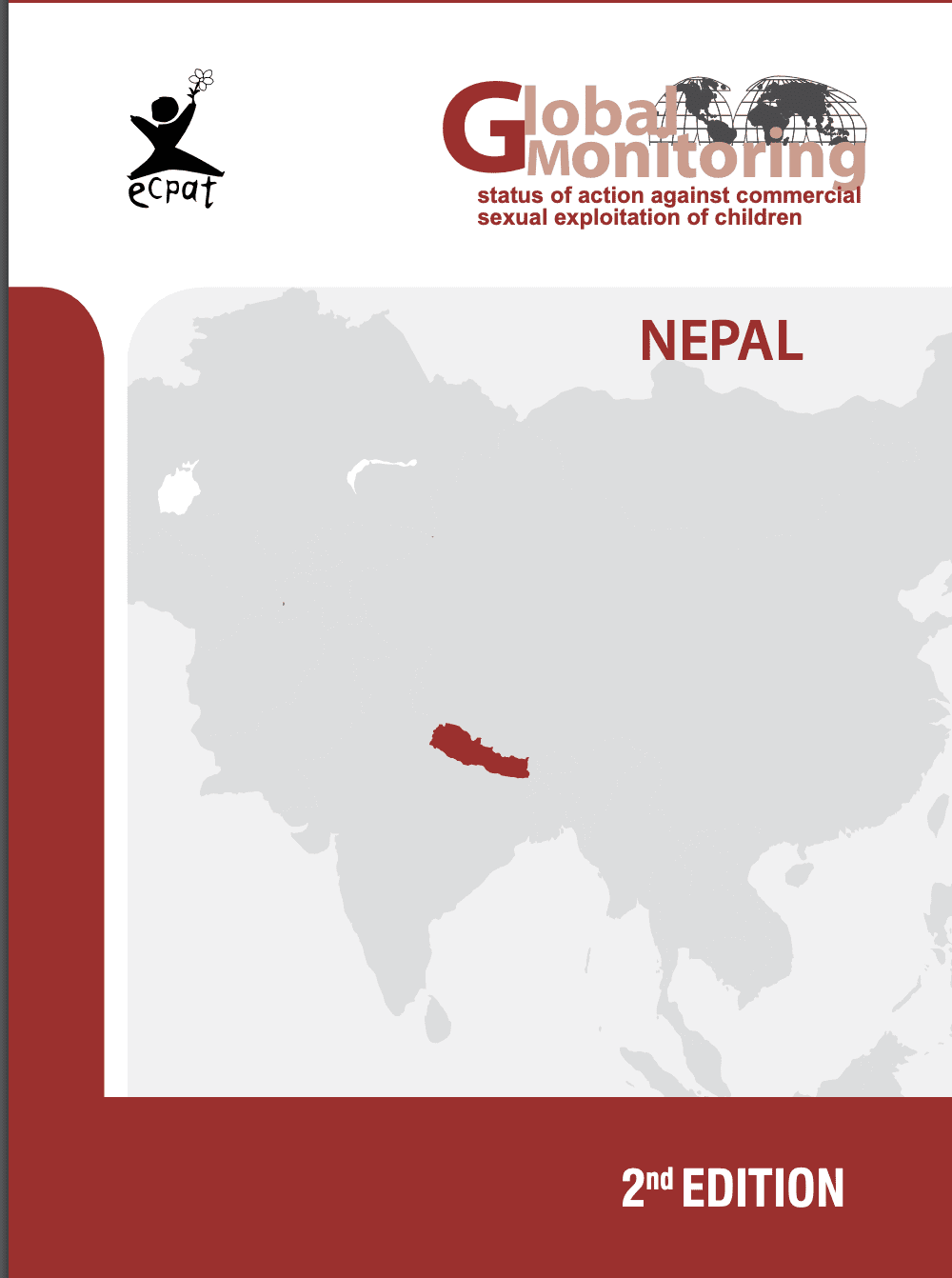
Global Monitoring Status of Action Against Commercial Sexual Exploitation of Children – Nepal
Any analysis on the status of children in Nepal must take into account the changing political situation in Nepal. The ten-year civil war between Maoist insurgents and government forces ended in November 2006 with a peace accord and the promulgation of an interim constitution committed to equality, secularism and respect for human rights.1 It also guarantees rights of children, including the right to education, healthcare, social security and protection.2 Following a nationwide election in April 2008, the newly formed Constituent Assembly declared Nepal a federal democratic republic and abolished the monarchy.3 The Government also began the task of writing a new Constitution, wherein the rights of children may be incorporated as fundamental rights.4
Nepal now faces transitioning to a new kind of state and confronting its long-standing development challenges at a time of global economic downturn.5 Nepal is one of the poorest and least developed6 countries in the world, and close to a fourth of its population is living below the poverty line.7 In its 2010 country overview, the World Bank indicated that the key challenges facing the new Government are to reinstate the legitimacy of the State, maintain law and order and deliver benefits to those that have been excluded, and all other members of the society.8
The conflict and continuing political upheaval, marked by a high incidence of raids, abductions and disappearances of local people, have only intensified poverty and political instability.9 According to UNICEF, the conflict has resulted in limited access to basic services, impeded development and caused a breakdown of family and community networks, with women and children suffering the greatest impact.10 The conflict has had significant impact on education: forced closure of schools; teachers and staff have been reportedly threatened, assaulted or even murdered; students have been forced out of school and compelled to undergo political indoctrination or recruited into the Maoist force.11
Nepal’s conflict has also contributed to the rise of commercial sexual exploitation of children (CSEC) and women by dislocating rural populations to urban centres, and causing the death or disappearances of thousands boys and men, resulting in increased pressure upon women and girls to support their families.12 These factors have pushed many desperate young people to take jobs in massage parlours and dance restaurants where sexual exploitation can take place. Other factors contributing to the rise of CSEC have been the deterioration of the carpet, garment and pashmina industries that left many women and girls unemployed, and the rapidly changing social norms.13
Following the 1996 Stockholm and the 2001 Yokohama global forums on CSEC, Nepal reaffirmed its commitments to combat sexual exploitation of children and adolescents at the 2008 World Congress III against the Sexual Exploitation of Children and Adolescents, in Brasil. In total, more than 3,000 people took part in the threeday gathering, including representatives from government, the private sector and civil society, as well as 300 children and adolescents from around the world.
Read more here.
